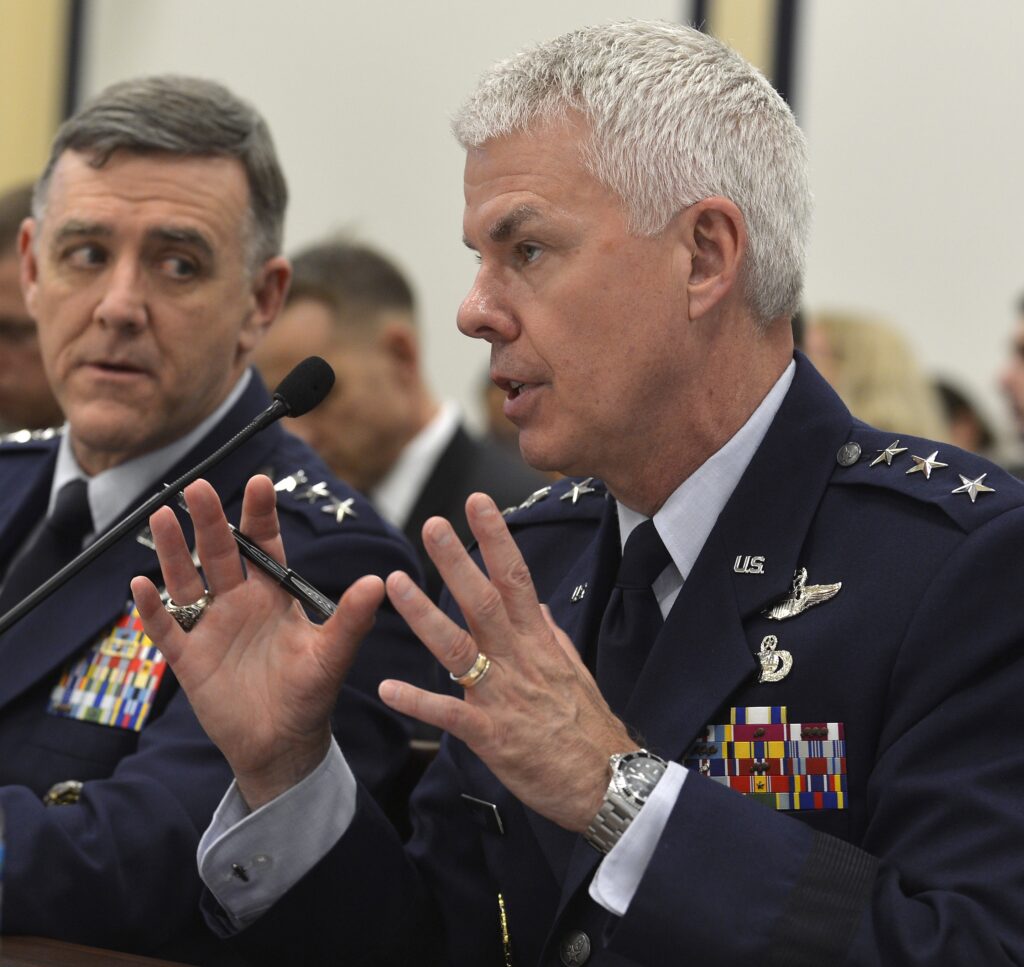PENTAGON: The Air Force has substantially driven down its acquisition costs for the second year in a row, doubling its success in cutting cost estimates from $7 billion last year to $13.4 billion this year. But not all is rosy in acquisition land. Schedule problems continue to mount, getting a “poor” rating from the service, with more than 102 months added to major programs between September 2012 and September 2013.
Since it’s a reasonable question to ask: Did they do this just by changing the assumptions underlying the costs? The answer is no. So, just as we report when the cost of a program soars, as in a Nunn-McCurdy breach, we report when those costs come down, especially when the number is repeated and is substantial. (Bear in mind that, as always, we are talking about cost estimates, known in Pentagon acquisition speak as Acquisition Performance Baselines.)
Here’s the meat: 24 of the Air Force’s 32 major programs “have reduced their acquisition program cost estimates by approximately $13.4 billion,” writes Robert Pollock, director of the Air Force’s acquisition excellence and change office.
But the puzzle is, how can programs take so much longer and not cost more? Lt. Gen. Charles R. Davis, the Air Force’s top uniformed acquisition official, was blunt. “There is true cost reduction here to the programs, which is totally counterintuitive to schedule growth in the programs,” he said in an interview in his Pentagon office.
A congressional aide with whom we shared the executive summary of the study (the Air Force Acquisition Annual Performance Assessment) offered these insights, saying the fractured state of congressional appropriations may well have affected the service’s acquisition costs.
“At first glance it would appear that they were likely impacted by the six months CR [Continuing Resolution] last year in some form or fashion in not being able to execute program funding,” the aide said in email. “And I would venture to guess that schedules are increasing and APBs are decreasing because they are taking funding from programs — which would naturally extend schedules — but likely also decreasing the quantity of end-items procured or developed, resulting in the decreasing APBs.”
Davis says the cost decreases are real. He says sequestration is, as best the services can tell, not the cause of the costs decline. However, explaining the incongruity of schedule increases coupled with cost decreases isn’t easy. Basically, Air Force acquisition leaders aren’t sure what’s going on.
The general pointed to several factors he believes helped lead to the decline in costs. A combination of companies doing a better job of building in risk to their bids with better government management of program reserves is helping defray cost increases may be helping. A major factor may also be, Davis thinks, that the disaster programs that have so badly scarred the Air Force acquisition community and Congress — such as the F-35, NPOESS (a deeply troubled weather satellite program), and some IT programs — are behind them. They’ve either been canceled, broken up or the programs have gone through their peak cost growth.
“i think you’re starting to see we are not starting all the new audacious big programs that we were,” he said. The Air Force now is mostly doing upgrades to programs or has scaled back its requirements, having learned its lessons from what Davis called programs like the F-35 that were “doomed the day the contract was signed.”
“We are not building the next F-35 and most of our investment dollars are spread across what I consider relatively simple modification programs with relatively mature technologies,” the general said.
Davis also attributes some of the decline in costs to better acquisition management, driven by the policies known as Better Buying Power developed by former Deputy Secretary of Defense Ash Carter and Frank Kendall, the head of Pentagon acquisition.
“I think having our program managers focus on the business deal and the strategy up front is paying off,” he said. Part of that is reflected in the drop in the number of successful contract protests filed with the Government Accountability Office.
Given the skepticism sure to greet the Air Force’s latest numbers on the Hill and among the service’s many critics, I asked Gen. Davis what he would tell Hill staffers given the chance.
“I would say, look at the data before you continue to lump Air force acquisition to the sins of the past. Look at the facts,” he said. “I think the staffer on the Hill should understand there has been progress made in controlling costs on acquisition. There has been progress made in limiting our appetitive for exquisite requirements. i think there has been progress made on adequately funding programs.”
(Here’s the story we did a little over a year ago about the first decline in costs.)
Air Force picks Anduril, General Atomics for next round of CCA work
The two vendors emerged successful from an original pool of five and are expected to carry their drone designs through a prototyping phase that will build and test aircraft.






























